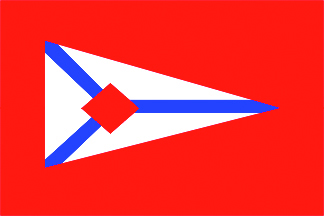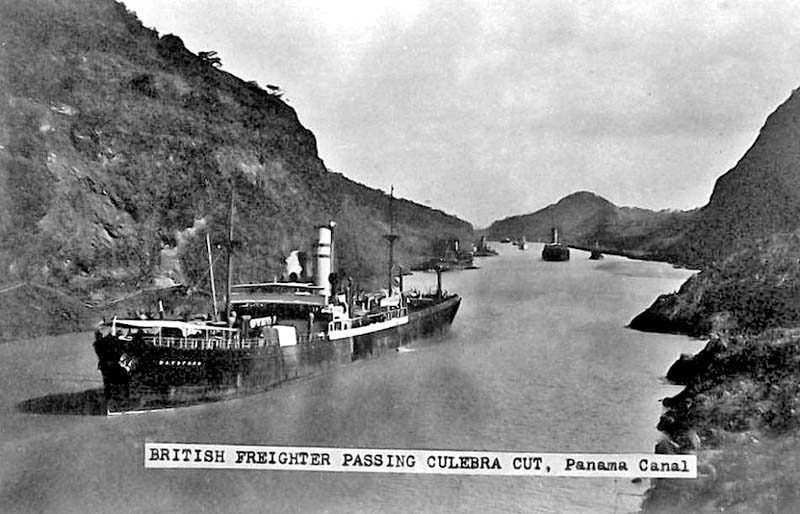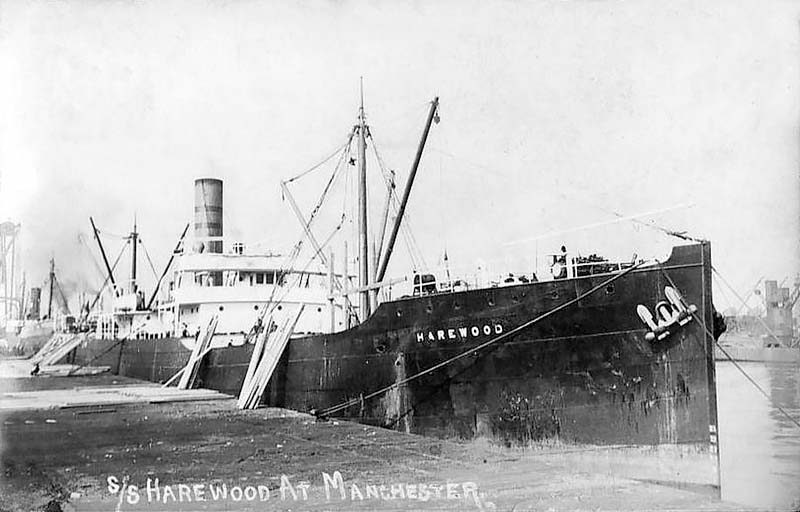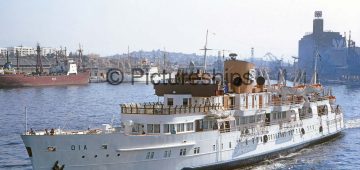
![]() Francis William Harris and James Dixon began to build up steam colliers from 1863 to operate in the North East Coast coal trade to the Thames both being, active on the Coal Exchange in London. As shipbrokers they could claim to be the oldest in the City with charter parties in their archives dating back to 1797 and 1813. Colliers included Hastings of 1864, Bwllfa of 1865, Merthyr of 1866, Fulmar of 1868, Lloyds of 1869 and Mid-Surrey of 1870. The total of their fleets numbered over a dozen colliers by 1873, the year in which Bwllfa, named after a South Wales colliery, was the first ship to be registered under the ownership of Harris, Dixon & Company. Later ships such as Richmond of 1871 and Wimbledon of 1872 were by then expanding their horizons by taking coal from the Tyne to Gibraltar and Mediterranean ports and from Cardiff to Black Sea ports and returning with grain from the Black Sea on the ‘Eternal Triangle’ route.
Francis William Harris and James Dixon began to build up steam colliers from 1863 to operate in the North East Coast coal trade to the Thames both being, active on the Coal Exchange in London. As shipbrokers they could claim to be the oldest in the City with charter parties in their archives dating back to 1797 and 1813. Colliers included Hastings of 1864, Bwllfa of 1865, Merthyr of 1866, Fulmar of 1868, Lloyds of 1869 and Mid-Surrey of 1870. The total of their fleets numbered over a dozen colliers by 1873, the year in which Bwllfa, named after a South Wales colliery, was the first ship to be registered under the ownership of Harris, Dixon & Company. Later ships such as Richmond of 1871 and Wimbledon of 1872 were by then expanding their horizons by taking coal from the Tyne to Gibraltar and Mediterranean ports and from Cardiff to Black Sea ports and returning with grain from the Black Sea on the ‘Eternal Triangle’ route.

Larger tramps such as Joseph Pease of 1876 and F. W. Harris of 1877 completed to the order of Dixon & Harris at Stockton, but the partnership names had been reversed to Harris & Dixon by the time Navigation of 1879 and Northern of 1880 were completed at Palmer’s yard at Jarrow. They were owned on the 64ths system. Francis W. Harris having 12 shares, E. Harris 2 shares, and James Dixon 13 shares in each ship, with the rest of the shareholders residing in London, Norfolk, Gloucester, Devonport and elsewhere. Three marine losses were suffered during 1878 in Richmond, Joseph Pease and F. W. Harris. The partners’ first new steel tramp Shagbrook of 1884 was completed in October of that year by William Gray at Hartlepool. By this time only a couple of colliers were still engaged on the coal trade into the Thames with only Mid-Surrey left in the 1890s and she was exceptional in that she completed 50 years service with the fleet before being sold for scrap in 1920. New larger tramps were then ordered to participate in world-wide trading to the Middle East and Far East, Pacific, and from the U.S. Gulf and U.S. Eastern seaboard to U.K./Continent with timber, grain and cotton. They were completed for the ownership of one-ship limited liability companies taken from the name of the ship, e.g. Elvaston of 1887, Cheniston of Wakefield of 1888, Collingham of 1889, Courtfield of 1893 and Brinkburn of 1894.
The Century Steamship Co. Ltd. was set-up just before the advent of the new century to own Brinkburn of 1899 launched by Helen Turnbull and completed in July that year at the Turnbull yard in Whitby. Brinkburn sailed on her maiden voyage to Madagascar on charter to the French Government with a cargo of shallow draft boats to quell a revolt on the island. Harris & Dixon owned shares in all of the Turnbull tramps in their Whitby, Cardiff and London fleets, and also acted as insurance agents and chartering agents for Turnbull.


The 4,150grt Harewood was built in 1913 by J.L. Thompson at North Sands. On 13th April 1918 she was scuttled by U-155 380nm SW of Lisbon with the loss of two crew members.
Three more tramp owning companies were soon set-up as the Cornhill Steamship Co. Ltd. in 1904, the Gracechurch Steamship Co. Ltd. in 1905 and the Alliance Steamship Co. Ltd. in 1906. Twenty new and second-hand tramps were purchased and registered under these four companies between the tum of the century and 1908, and Harris & Dixon was made into a company of limited liability on 28th December 1902. The Gracechurch company, taken from the address of the company in London, was to have the greatest longevity, with Harris & Dixon registering ships under that company for the next fifty years. Five tramps were purchased at this time from the liquidators of the Heath Line of London, freight rates remaining in slump until 1908. A fleet of eighteen tramps was being traded in 1910 to participate in the better freight rates for e.g. coal out to Newport News, returning with timber from British Columbia or sugar from Java or general cargo from Hong Kong. Ten large tramps were completed by the J. L. Thompson yard at Sunderland for the company between 1909 and 1914, the largest being able to carry over 7,000 tons of cargo. They were named as Brinkburn (3), Wakefield (2), Collingharn (2), Northern (2), Southern, Cheniston (2), Elvaston (3), Mottisfont, Harewood (2) and Batsford.
World War I
Sixteen tramps were owned by the company at the outbreak of World War I, with two lost to torpedoes and shells from U-boats:-
- 8.6.1917 Saragossa – Torpedoed/sunk in the Atlantic 178m NW of Fastnet o. v. Cuba and Halifax (NS) to Queenstown with sugar.
- 13.4.1918 Harewood – Sunk by gunfire in the Atlantic 380m SW of Lisbon o.v. New York to Gibraltar with general cargo. 2 lost including the Master.
In addition, Carnlake which had earlier been in the fleet as Wandsworth was lost by stranding on 17th August 1917. Four large new tramps were completed for the company by Sunderland yards during the war as Southern (2), Mottisfont (2), Holbrook, and Dunbridge. Lord Strathcona, completed for John Herron & Company, was purchased in December 1916 for the Canadian trades. This quintet and many of the company’s other tramps were requisitioned as Admiralty colliers, or expeditionary force supply ships from Canada/U.S.A. to France, or to bring urgently required wheat from the Plate and nitrates from Chile to the U.K. Further replacements came from purchased tramps such as Wooda of 1901, but many ships were sold off for the better prices obtained during the war years. Four were sold to Canadian Pacific Steamships during 1917/18 mostly without change of name as Heliopolis, Mottisfont, Holbrook and Dunbridge. Heliopolis had initially been purchased by the Admiralty in March 1913 for conversion to a hospital ship and was renamed Maine (2) in July 1914 but her speed was insufficient for her new use and she reverted to Harris & Dixon Ltd. in March 1916.

Subscribe today to read the full article!
Simply click below to subscribe and not only read the full article instantly, but gain unparalleled access to the specialist magazine for shipping enthusiasts.





Comments
Sorry, comments are closed for this item